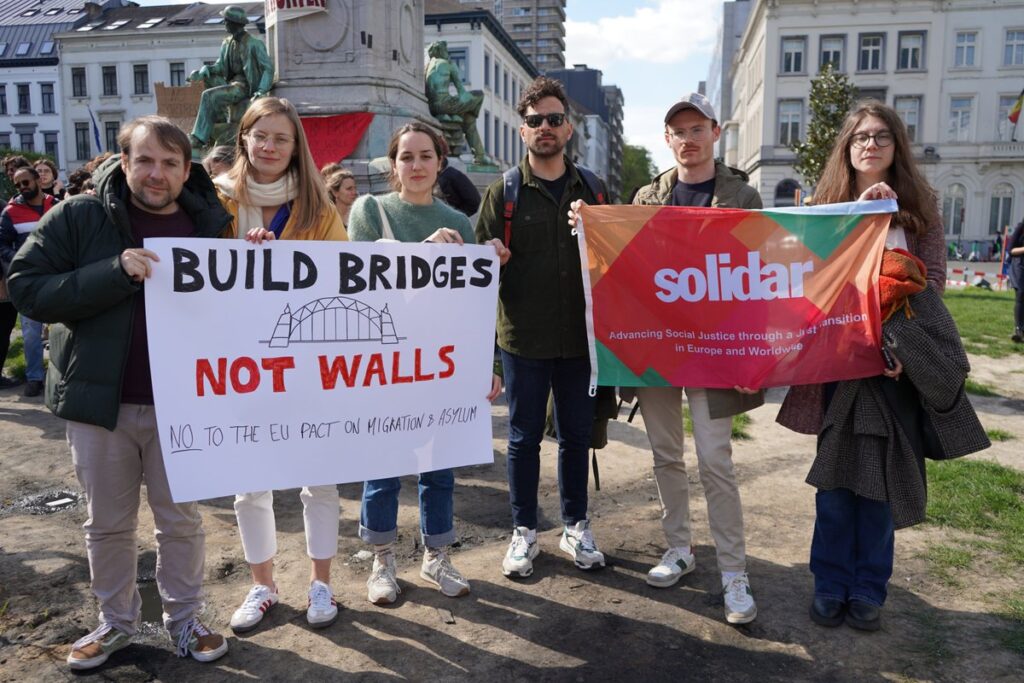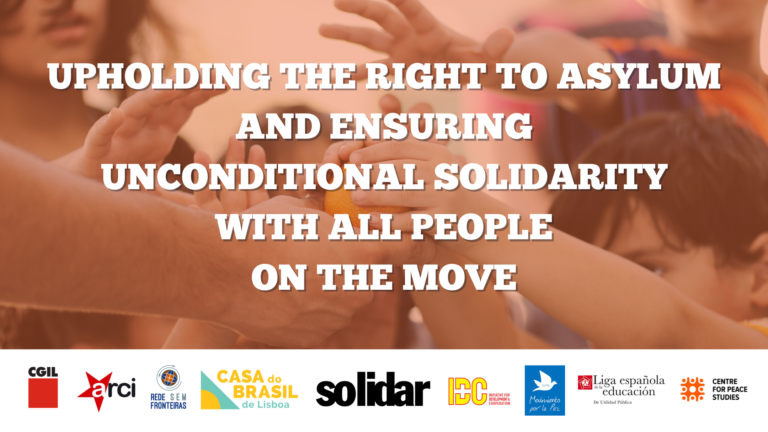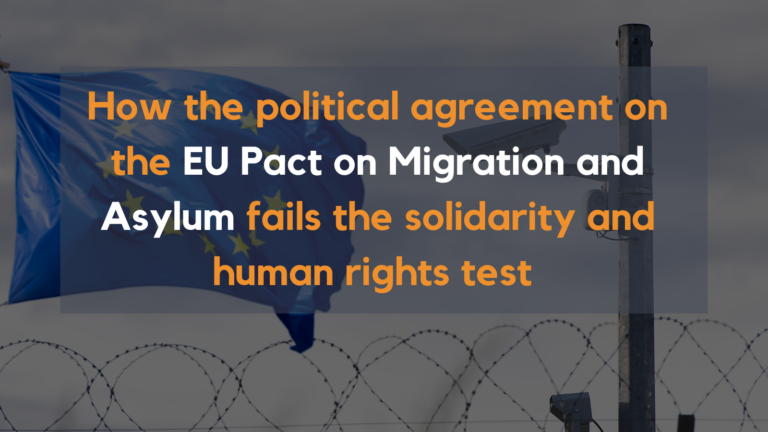The EU Pact on Migration and Asylum, an exercise in eroding the right to seek asylum, is set to become law

Three years and a half after its presentation in September 2020 by the European Commission, the adoption process of the no-longer-so New Pact on Migration and Asylum is finally nearing its end. Members of Parliament (MEPs) adopted last Wednesday, 10th April, six regulations constituting the EU Pact, as well as two recast directives and a regulation agreed in the previous reforms cycle.
SOLIDAR already expressed its disappointment with the outcomes of the negotiations that finished in December 2023. Progressive civil society organisations (CSOs) have continued their effort to raise public and decision-makers’ awareness of the disastrous consequences of the Pact on migrants’ lives and SOLIDAR thanks the MEPs who voted against it or abstained as a commitment to fundamental rights.

This Pact institutionalises the appalling practices that have been ongoing illegally for years in some Member States: de facto detention, second-rate asylum procedures at the borders and pushbacks.
- People arriving in Europe without a travel document will have to undergo a screening procedure for security, medical and vulnerability checks, in detention and with reduced legal safeguards.
- People can be then channeled into either normal or accelerated borders procedures, unless their claim for asylum is found ‘inadmissible’ by way of an expanded ‘safe third country’ concept. In that case, they can face expeditious deportation to third countries.
- Meanwhile, the rules for State allocation of responsibility for asylum-seekers, which desperately need reform, will remain substantially unchanged, minus the welcome inclusion of a diploma criteria. To compensate this unfairness, mandatory solidarity between Member States will be codified into law for the first time; yet it will remain flexible, with relocation targets far below the actual needs.
- Solidarity will be enhanced when a Member State finds itself in one of three situations categorized as ‘crisis’, however the same State will be allowed to derogate to common standards and safeguards, including when claiming a third-country or non-State actor is ‘instrumentalising’ migrants (intentionally pushing them to cross its border).
- Facial images and fingerprints of children as young as six years old will be collected and stored for purposes of migrants’ surveillance and policing.
”Human mobility is a common historical reality that this Pact will not stop. What the Pact will do is increase the vulnerability of people in need of protection. Another approach to migration challenges is possible, as demonstrated by the EU response to displacement from Ukraine; we need to head towards safe routes, dignified reception and swift granting of status and rights upon arrival.”
Mikael Leyi, Secretary General, SOLIDAR
The final confirmation from Member States is still pending, but the Pact is set to enter into force. Next steps will focus on preparing the implementation of the Pact with many issues remaining unsolved, such as the functioning of the solidarity and fundamental rights monitoring mechanism; assurance that CSOs’ humanitarian activities cannot be criminalised as ‘instrumentalisation of migrants’; or the definition of legal counselling to which applicants will be entitled in the border procedure. The European Commission’s and Member States’ implementation plans will have to answer these questions. Implementation should not only be about applying the border procedure but also guaranteeing human rights and meaningful solidarity focusing on the relocation of people, and tackling longstanding issues such as inadequate reception conditions. CSOs at the relevant level, including migrant- and refugee-led organisations, should be involved in the design of these implementation plans as well as their deployment, their monitoring and evaluation.
SOLIDAR and its members will continue to promote a rights- and solidarity-based approach to migration challenges in the implementation of the Pact and beyond.




